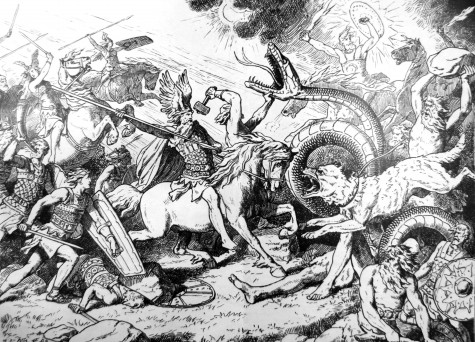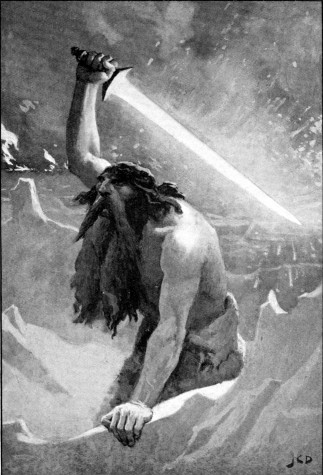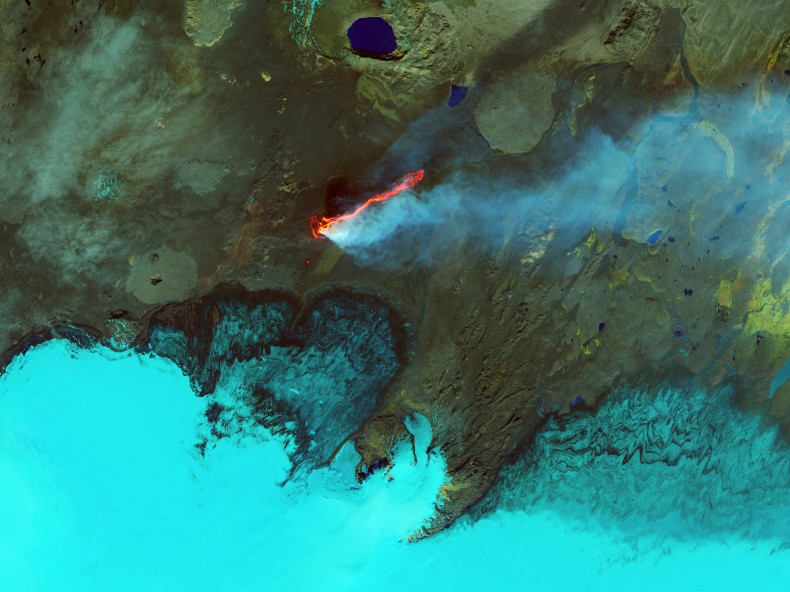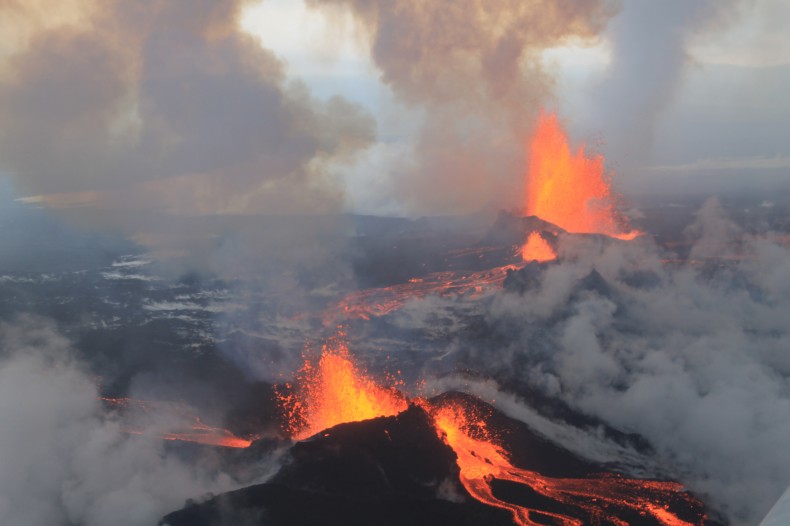Snow fell on the four quarters of the world; icy winds blew from every side; the sun and the moon were hidden by storms.
— Writer and folklorist Padraic Colum, citing an Icelandic legend in Orpheus: Myths of the World
When you live in Iceland, you kind of expect a rough winter. But sometimes the winters are harsher than most, and sometimes they seem to last year after year. To anyone clinging to this chunk of hardened lava in the North Atlantic, it might feel like the end of the world is at hand.
As indeed it may have been. In an overview of world mythology published in 1930, Colum describes a series of devastating, unnamed Icelandic winters that sound like something the Game of Thrones writers may have dreamed up:
There was three years’ winter. The first was called the Winter of Winds: storms blew, and snows drove down, and frosts were mighty….The second winter was called the Winter of the Sword; those were left alive amongst men robbed and slew for what was left to feed on….And third winter was called the Winter of the World. Then the ancient witch who lived in the Ironwood fed the Wolf Managarm on unburied men….The Heroes in Valhall would find their seats splashed with the blood that Managarm dashed from his jaws; this was a sign to the Gods that the time of the last battle was approaching.

In Norse mythology, that last battle is Ragnarök, when the gods and the giants fight almost to the death. Ragnarök is where the old world order collapses and a new one emerges. (Humans survive thanks to a man and a woman who wisely hide out in a forest during the destruction, sipping morning dew to stay alive.)
Tales of Ragnarök and other Old Norse myths are scattered across Scandinavia, but Iceland is where most of them got written down. Perhaps because of that, and perhaps also because of its extraordinary geography, Iceland plays an outsize role in the Norse legends. Notably, Iceland’s remarkable volcanoes help frame and contextualize the myths.
One theory holds that the fire giant Surtr, who wields a flaming sword and fought the god Freyr at Ragnarök, may have been a volcano demon. The events that transpire after the battle also sound familiar to anyone who has ever witnessed an eruption:
The sun turns black, earth sinks in the sea,
The hot stars down from heaven are whirled;
Fierce grows the steam and the life-feeding flame
Till fire leaps high about heaven itself.
With that in mind, look again at Colum’s description of three bitter winters leading up to Ragnarök. Could all that cold have stemmed from a real-life Icelandic eruption?
Jelle Zeilinger de Boer thinks so. De Boer, a geologist and historian retired from Wesleyan University in Connecticut, believes that the myth of Ragnarök might stem from a catastrophic Icelandic eruption in the ninth century. De Boer put forth this idea in his 2002 book Volcanoes in Human History, and told me via email that it fits his theories “in which destructive events are followed for years and decades by psychological, socio-economic and especially political aftereffects.”

It makes sense. Sulfur particles belched out by eruptions can cool the climate for years. And Iceland did experience a massive eruption around the year 870, when Vikings arrived to settle the island.
Archaeologists call the ash layer from the eruption the “settlement layer,” and use it to conveniently mark the boundary before and after humans. The eruption would have been a remarkable blast, and it could have temporarily cooled Iceland’s climate. Anyone suffering through those winters would surely have passed the stories down to the next generation.
And where exactly did this eruption in the year 870 take place? Why, at a volcano called Bárðarbunga*. A volcano that is erupting now.
So far, the 2014 Bárðarbunga outburst is nothing like what happened in 870. The ground has ripped open in a short gash, and fire fountains are spurting upward like curtains of flame. (See here for a neat video of the lava flow shot from a drone.) It looks dramatic, but other than spreading air pollution over eastern Iceland it is relatively harmless.
That could still change. Icelandic scientists have laid out several scenarios for how the Bárðarbunga eruption could play out. They range from the relatively boring — in which the eruption dies out quietly — to the dramatic — in which magma starts erupting to the south and west of where it is now, under the ice. Such a ‘subglacial’ eruption could create massive meltwater floods that race downstream across north Iceland, and/or towering plumes of ash.
It might not be a modern-day Ragnarök, but it bears watching.
UPDATED: After this post was published I received an email from Mathias Nordvig, a Norse scholar at Aarhus University in Denmark. He has argued that the Ragnarök myth could be linked with the tremendous 934 eruption of another Icelandic volcano, Eldgjá. See here for Nordvig’s very interesting thesis on the role of volcanism in many of the Norse myths.
Alexandra Witze is the co-author, with Jeff Kanipe, of Island on Fire, a new book detailing the extraordinary eruption of the Icelandic volcano Laki in the year 1783.
*Bárðarbunga means “Bárður’s bulge,” and is named after a man named Bárður who noted the mountain rising beneath a massive ice cap.
 Images, from top: 2014 Bárðarbunga eruption from Flickr/peterhartree; Ragnarök and Surtr images from Wikimedia Commons; false-color satellite view of the 2014 eruption from NASA’s Earth Observatory, image by Jesse Allen using US Geological Survey Landsat data.
Images, from top: 2014 Bárðarbunga eruption from Flickr/peterhartree; Ragnarök and Surtr images from Wikimedia Commons; false-color satellite view of the 2014 eruption from NASA’s Earth Observatory, image by Jesse Allen using US Geological Survey Landsat data.

Perhaps …. Indeed.